Christie MicroTiles, size does matter
Bob Rushby, Chief Technology Officer and Vice President of Research and Development at Christie Digital Systems, exposes in this Column a simple maxim: the larger the size, the greater the visibility. A formula that is especially applicable in the case of digital signage, an emerging technology that continues to fight to gain a real foothold in those sectors in which it really should have already succeeded: retail points of sale and public spaces.
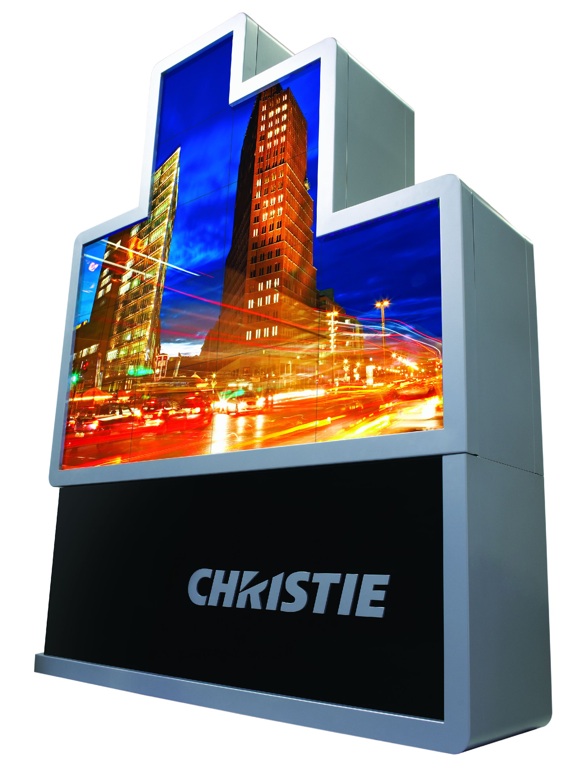 There are many factors that contribute to the fact that digital signage continues to be an industry waiting to be exploited in these sectors, but one of the most important is the size of the screens and the consequent lack of a real impact. While typical domestic LCD or plasma screens dominate the visual space of a living room, occupying a large part of the wall, that prominence disappears when the space is much larger and more visually charged, as is the case in large shopping areas or public spaces, such as train stations, airports, shopping centres and large building lobbies.
There are many factors that contribute to the fact that digital signage continues to be an industry waiting to be exploited in these sectors, but one of the most important is the size of the screens and the consequent lack of a real impact. While typical domestic LCD or plasma screens dominate the visual space of a living room, occupying a large part of the wall, that prominence disappears when the space is much larger and more visually charged, as is the case in large shopping areas or public spaces, such as train stations, airports, shopping centres and large building lobbies.
Many businesses and leading companies in the media industry have tried to install or hang flat screens everywhere in these large spaces to capture the attention of buyers, finding that, in most cases, these potential spectators wander around oblivious to the claim. The screens lack the power to pick up because their size is not large enough, renouncing the surprise factor that the first LCD screens launched on the market had a decade ago.
Alex Hughes, chief strategy officer at British digital content agency AMiGO is one of many experts who have become aware of the importance of size. According to Hughes, "In messaging, visually rich environments like a supermarket, clarity, boldness, message coherence, and, of course, scale, are necessary to draw attention and impact, in a positive sense, on the consumer."
When network technicians realized that plan A for small screens wasn't working as well as they wanted, they embarked on plan B, which was to group small screens together for a bigger effect. Obviously, visibility was increased but its execution failed miserably.
All commercial and home displays have what is known as a "frame" or "mount," which is nothing more than an outer grooved edge that frames the image and serves as a trim to hide the attachment and mounting points of LCD and plasma displays.
When these frames are joined together to form a group of screens, a combined image is obtained, that is, a grid where the visualization is divided into quadrants with varying degrees of homogeneity. To be honest, the result is almost always poor and at best a compromise solution.
Then we have the problem of calibrating and controlling multiple monitors to achieve chromatic uniformity in the images. The reds in one quadrant may appear more orange in the other three; the upper right corner, brighter than the upper left, etc.
These dies have the added disadvantage of weight. When installed against the wall, they make maintenance and service operations difficult and expensive, as technicians have to access the rear panels of the units in one way or another to carry out almost any task.
There are other ways to "make the leap to the big screen", but these options pose their own challenges, so they are rarely resorted to.
The outdoor advertising industry is in the midst of a determined conversion of its billboard stock into solid LED screens. It has been proven that it is possible to obtain better economic performance from digital screens and reduce many of the operating expenses associated with the infinite wallpapering of billboards along highways. The manufacturers of these giant LED panels have indoor versions designed for shops and public spaces. However, its use poses two fundamental problems.
LED monitors are made up of thousands of tiny light-emitting diodes that combine to generate images that are clearly visible from a distance. However, when approaching the image, visibility loses quality due to the effect of what has been called the "pixel pitch".
Up close, the look of outdoor panels leaves a lot to be desired as a result of that "pixel pitch". Even the best indoor panels, those that have a pixel pitch of 3 to 4 millimeters, do the most to deliver second-rate images, unless the viewer moves far enough away from the screen. In that case it will work, but, as we can see, we are faced with another compromise solution.
The other challenge is cost. Indoor LED arrays are impossible to assume for the budgets of most businesses, building maintenance operators and support companies. At least for the time being, these indoor LEDs are still niche products due to their cost per square metre.
If you want to make the leap to a larger-scale solution, front projection and rear projection are two other options to consider, but, again, the proper operation of these technologies poses significant challenges to overcome in the type of environments considered here.
Brightness imaging systems in dimly lit spaces have to cope with the bright ambient light characteristic of most shops, as well as the continuous changes in natural light, which are common in most public spaces with large windows and atriums. Visualizations that offer better visibility in dark spaces may have a "faded" appearance in areas with natural lighting due to the great obstacles to overcome to achieve adequate contrast levels.
Another physical requirement of this type of display system is the need for an interruption-free space both at the front and back of the projection stand – such as glass coated with a special optical film – to prevent the appearance of shadows and silhouettes. However, it is generally very difficult to achieve these configurations unless the screens are mounted at the top, in a completely secluded place and therefore outside the natural line of sight.
To generate bright images, projection systems use lamps designed to last for a set number of months (rather than years), before they need to be replaced. The costs of such lamps and the labor involved in replacing them make it necessary to completely rule out these projection systems as possible viable options for most digital signage projects.
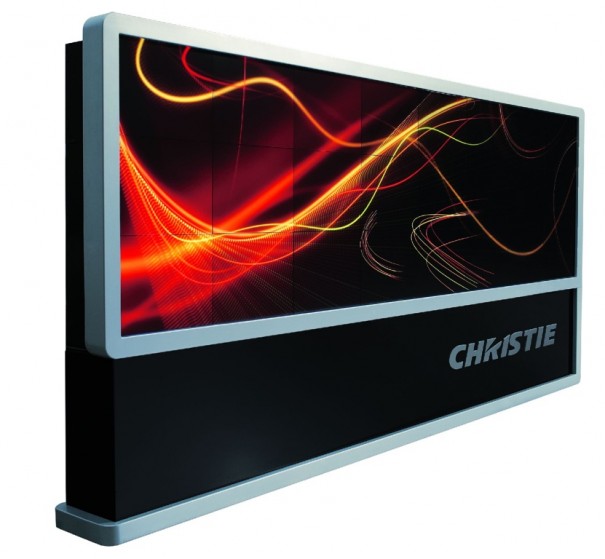 Christie MicroTiles, without compromising on quality
Christie MicroTiles, without compromising on quality
If size is the true answer to this type of space, it is essential to resort to new technology. At Christie, we have valued the opportunity that presents itself and all the challenges it implies, pouring all the weight of our experience and our R+D capabilities into Christie MicroTiles.
A completely new modular display technology, developed and patented by Christie and which is the result of several years of R+D, based on DLP, LED and rear projection technologies. A technology that makes most of the physical, economic and maintenance problems involved in the move to a larger-scale solution disappear. A technology that also involves a change of mentality, going (so to speak) from making display devices work in an environment, to having a digital canvas totally open to any visual possibility.
Christie MicroTiles are visual building blocks that can take on almost any size or shape, free from the unsightly, thick joints and those compromises in contrast and sharpness that once ruined many of the great visualizations we've all witnessed at some point.
These display modules have extremely fine pixels, which can be detected from any distance and are also equipped with superior viewing angles and have been specially designed to meet the many challenges posed by the leap to the big screen.
The physical properties of Christie MicroTiles address all the challenges of installing full-motion media in public spaces and large shops, while opening up new possibilities. These quadrants are small cubes measuring 306 mm (H) x 408 mm (W) x 254 mm (D) that can be easily stacked and stacked into any shape imaginable. We can cover an entire wall with these blocks, frame a window or anything else you want to highlight, place them in a line like a bow around a room, arrange them like a game of Scrabble to finish, etc. In contrast to the fully visible joints that form when joining the frames of the screens, with Christie MicroTiles the joints are only one millimeter thick and most of the time disappear.
Christie MicroTiles modules do not overheat. You only have to leave a slack of a few centimeters behind the buckets for the air to circulate. In addition, they do not require any maintenance. The LED light source that feeds the image of the screen has an expected duration of 65,000 hours of use, at which point the brightness level begins to degrade, showing that it is at the same height or even above LCD screens. If any maintenance operation is necessary, you just have to access the front and we can replace the most complicated component (the light engine) in a maximum of 15 minutes.
Each of the quadrants of the mosaic has been designed to self-calibrate and adjust, always maintaining communication with the surrounding quadrants. This means that a quadrant matrix will always be characterized by a uniformity in brightness, color, and contrast. Compared to other tiled screens that require continuous care and control to maintain a homogeneous appearance, Christie MicroTiles modules are equipped with a processor that manages communication between the quadrants uninterruptedly, reaching a consensus on what they should look like.
Quadrants also generate significant color saturation, which means that when a company manager sees a screen with their company's logo, it's not that the reproduction of orange or bluish colors is "virtually" true to the original, but that the colors are identical.
Our R+D team took advantage of a well-known phenomenon called the Helmholtz-Kohlrausch effect (or HK phenomenon). After methodically examining light sources, we were able to produce colours with higher saturation and brightness, and consequently images with more vivid colours. Many are the extensive and complicated scientific papers that have been written about the HK effect, but the bottom line is that the images achieved are unparalleled in the display industry.
Despite the great sophistication behind the technical design, the end user will find a very simple process. The data output from a computer or media player goes to a small external control unit that is responsible for driving the Christie MicroTiles quadrants, which are stacked, joined together as if they were simple bolted blocks, and connected by a common connection wire and power cables. In the specific case of large format screens that require several control units, these units communicate with each other automatically synchronizing in a matter of seconds, without the need for any technician intervention.
For digital displays to truly work in environments where everything is large-scale, the lines of sight are very long and the ceilings are very high, they need to take on a larger dimension. They must be more than just technology to "fill gaps" or occupy a space "just because". Screens must be authentic design elements, capable of functioning within the general concept of the space in which they are located and of being part of the overall experience of customers and visitors.
"Christie MicroTiles has come to the industry at the most opportune and right time," said Denys Lavigne, president of Canadian content creation company Arsenal Media. "What I mean is that we are at a point where, both from a consumer and brand perspective, there are a few key issues of increasing importance. I'm talking about size and impact, creativity when adapting something in a space and the quality of the image," says Lavigne.
"From a creative point of view, one of the most striking aspects of this technology is that it will not only allow us to create a creative installation with high chromaticism, but it will also allow us to introduce a new visual texture," adds Lavigne. "Something truly unique."
These screens require a commercial approach that goes beyond those cases in which "money is not an issue". In other words, an approach that allows them to be integrated into the infrastructure and construction designs of conventional businesses. This means digital display installations with a lasting and perceptible impact as well as a technical design that controls energy costs, has a long service life, minimizes high maintenance and replacement costs and offers a visual experience that gets retailers and brands interested in this technology excited, instead of having them wish that there were not so many concessions to make visualization possible.
To date, the leap to a large-scale solution has been one of the most significant challenges that digital signage and the digital realm outside the domestic sector have had to face; That is why we are convinced that we have a convincing and possible solution.
Bob Rushby
Chief Technology Officer and Vice President of Research and Development at Christie Digital Systems
Did you like this article?
Subscribe to us RSS feed And you will not miss anything.



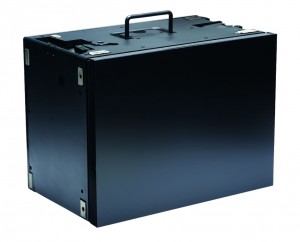
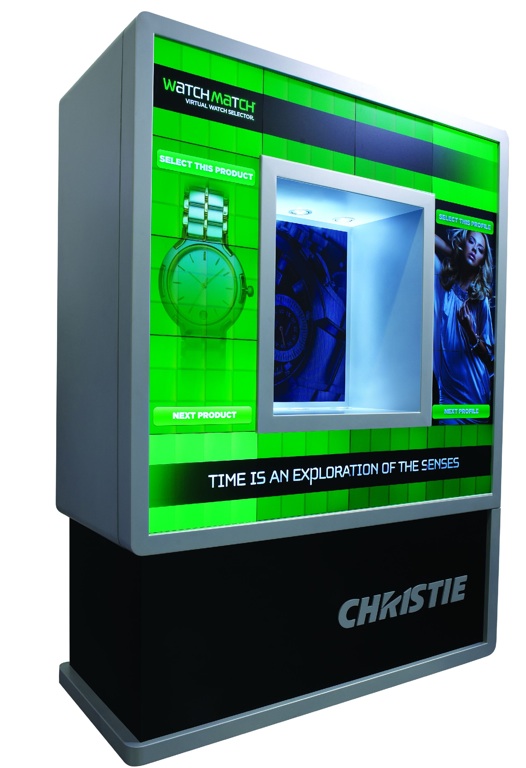


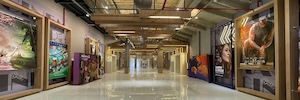



![Videoreport instala dos MicroTiles con servidores EVS XT[2] en ‘El Hormiguero’ y ‘Tonterías las justas’ Videoreport instala dos MicroTiles con servidores EVS XT[2] en ‘El Hormiguero’ y ‘Tonterías las justas’](/wp-content/uploads/2011/02/Tonteriaslasjustas-270x80.jpg)






